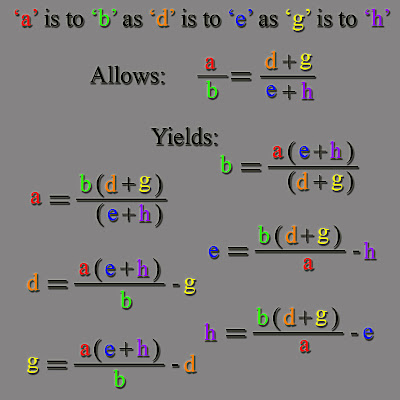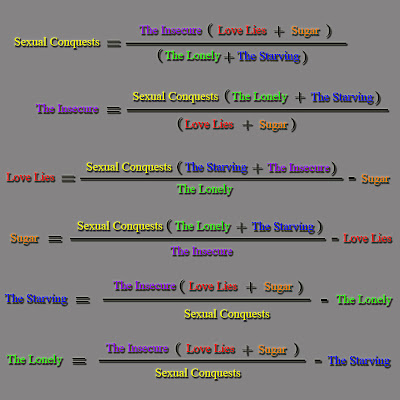The Paradigm Poem
The Paradigm Poem
Unlike a simple mathematical structure as in the “Similar Triangles Poem”, the “Paradigm Poem” is a mathematical poetry technique that borrows its structure from an existing equation from applied mathematics of scientific or cultural significance. The “Paradigm Poem has many sub-categories which are as numerous as there are categories for applied mathematics. Examples that we could consider would be: “Physics Paradigm Poem”, “Chemistry Paradigm Poem”, “Business Accounting Paradigm Poem”, “ Psychophysiological Paradigm Poem” etc.
If we think in terms of metaphor using the cognitive scientific language of George Lakoff then we would classify the language of the variables “inside the equation structure” as the ‘target domain’ and the context or traditional meaning of the equation as the “source domain’
Let me show an example of a “Physics Paradigm Poem” using Newton’s second law. For this example I am going to use an excerpt from my essay on “Polyaesthetics and Mathematical Poetry” Journal of Mathematics and the Arts, Volume 1, Issue 1 March 2007 , pages 35 - 40 Publisher: Taylor & Francis Informa Ltd Registered in England and Wales Registered Number: 1072954
“My personal view is that almost all mathematic applications rely on using equations with the intent similar to simile. The variables in the equation are compared explicitly with the result for uses in denotation. For example, in the case of an application of
Newton’s second law F = ma, or Force equals Mass times Acceleration, we are comparing the variables m (Mass) and a (Acceleration) explicitly to F (Force).
I can now make a mathematical poem based on the latter example by expressing the Force of ‘yesterday’s freedom’ as being equal to ‘a lush clover patch’
multiplied by ‘the swelling sweet summer breeze traversing the morning’. We can then put this in the form of a mathematical equation as; Yesterday’s freedom = (a lush clover patch) (the swelling sweet summer breeze traversing the morning). In other words, I set the Force to ‘Yesterday’s freedom’, the mass to ‘a lush clover patch’, and I accelerated the mass by ‘the swelling sweet summer breeze traversing the morning’. All of these
phrases relate back to the original equation from physics F = ma. I want to emphasize that I was very careful when I made my choice for acceleration so that the phrase is evocative of the mathematical description of acceleration as defined by physics. Acceleration is the
change in velocity of an object per unit of elapsed time during that acceleration. Here, the change in velocity is implied by ‘swelling’ and the change in time is implied by ‘traversing’.” In the above example we are using the words “Yesterday’s freedom; a lush clover patch; the swelling sweet summer breeze traversing the morning” as the variables of the equations which supply us with the target domain and then we are using the equation from physics F = ma, its scientific meaning and historical significance as the source domain.
In the above example we are using the words “Yesterday’s freedom; a lush clover patch; the swelling sweet summer breeze traversing the morning” as the variables of the equations which supply us with the target domain and then we are using the equation from physics F = ma, its scientific meaning and historical significance as the source domain.
The bottom line concerning the ‘paradigm poem’ is that we borrow an equation from the past which inherently contains historical significance and serves as an paradigm or mathematical model that seems almost “a vessel” to carry the mathematical poem. The paradigm poem always borrows an existing mathematical structure to serve as a source domain in our metaphor.








































